The south pass of Fakarava Atoll in the Tuamotus is known for the big local population of Grey Reef-Sharks (Carcharhinus amblyrhynchos), which tend to stay in the strong current in the pass during the day. It is one of few places on earth where you can observe hundreds of sharks at the same time.
For some time divers and scientists have know that around the first full moon in July there is a mass phenomenon in this pass. Here all the sexually mature Camouflage Groupers (Epinephelus polyphekadion) from this atoll come together to spawn. Last year a group of scientists made a good ARTE documentary out of this mass spawning: The Grouper Mystery!
Since we are close to Fakarava at this time of the year we have to see this event with our own eyes. On the radio we hear reports from other sailors who are anchored close to the south pass that this year apparently there does not seem to be a mass event or it had already happened. Furthermore the sharks have vanished from the pass and all the divers are really disappointed. This doesn't sound good but we sail to the south pass anyway to see for ourselves.
We anchor close to the pass two days before the first full moon in July and explore the pass by dinghy and with our snorkeling gear. We start with the eastern side where we find a wonderful coral reef but no groupers or sharks anywhere. By chance we observe a diving boat with two divers on board, who look similar to the scientist from the documentary, driving far out on the western side of the pass. So we decide to shadow them and snorkel there. And here they are, we can see hundreds if not thousands of Camouflage-Groupers staying together in the current. They gather mainly above sandy pits and areas starting at a depth of 25 m. So we decide to get our diving gear to watch them more closely. Next to the unbelievable number of groupers we also discover where the Grey Reef Sharks have gone. They are cruising close to the groupers to hope for a big dinner at night. This is the reason why they are not in the pass at the moment.
We dive down into a soup of Camouflage Groupers. They are assembled in unbelievable abundance and stay close together in the current. Normally they are territorial and so it is fascinating to see them this close together. The dive is amazing and we even see two of those spawning dances. A female which is ready starts to swim in circles up towards the surface closely followed by one male close to her. So they seem to dance towards the surface. Of course the other males see this and start towards them. In a favorable moment the female releases her eggs closely followed by the cloud of sperm from the male, right before the other males also try their luck. An unbelievable spectacle! All this is over in a matter of seconds, but we are able to get a video with 120 frames per second. Back on board we finally see in slow motion what really happened in those few seconds.
We notice that most of the females already have empty bellies so we guess that the mass spawning is nearing its end.
On the second dive in the late afternoon the Camouflage-Groupers have moved towards the reef, probably to hide for the night. Groups of Grey Reef-Sharks swim around close to the bottom and are apparently looking for some food. Furthermore schools of Jacks (Carangidae), Fusseliers (Caesionidae), Barrakudas (Sphyraena jello), one big Maori-Wrass (Cheilinus undulatus) as well as some Dogtooth-Tuna (Gymnosarda unicolor) are close by. We even see two Eagle Rays (Aedobates narinari) hovering above the reef.
The next day we want to look at this spectacle again. We jump into the water at the same point, with the same current and at the same time. But are surprised to see a quite ordinary coral scenery before us. Almost all groupers are gone, no shark is around! They all seem to be on their way back home because normally they are territorial and defend their territory. We observe a few latecomers which swim towards the lagoon. Normally groupers do not swim for longer stretches so this is an interesting observation.
We slowly drift with the current through the pass and are suddenly confronted with a wall of sharks! There are over a hundred Grey Reef-Sharks assembled within the south pass of Fakarava. So they have returned after the grouper mass spawning to their normal place within the pass. There they rest in the current during the day and while diving you can observe them very closely. So a fascinating wonder of nature found it's end as if it never happened at all. Everything stays like this until next year between the summer solstice and the first full moon afterwards.


_meet_in_the_south_pass_of_Fakarava.jpg)
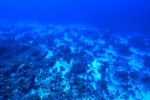
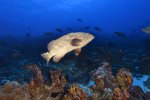
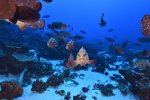
.jpg)
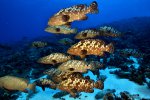
.jpg)
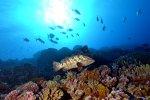
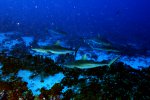
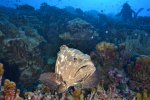
.jpg)
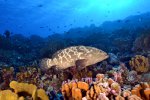
_swiming_over_us.jpg)
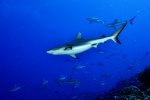
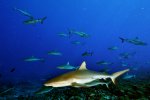
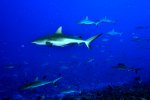
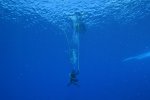
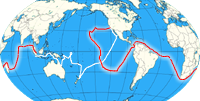 >>planned route - join us ...
>>planned route - join us ...